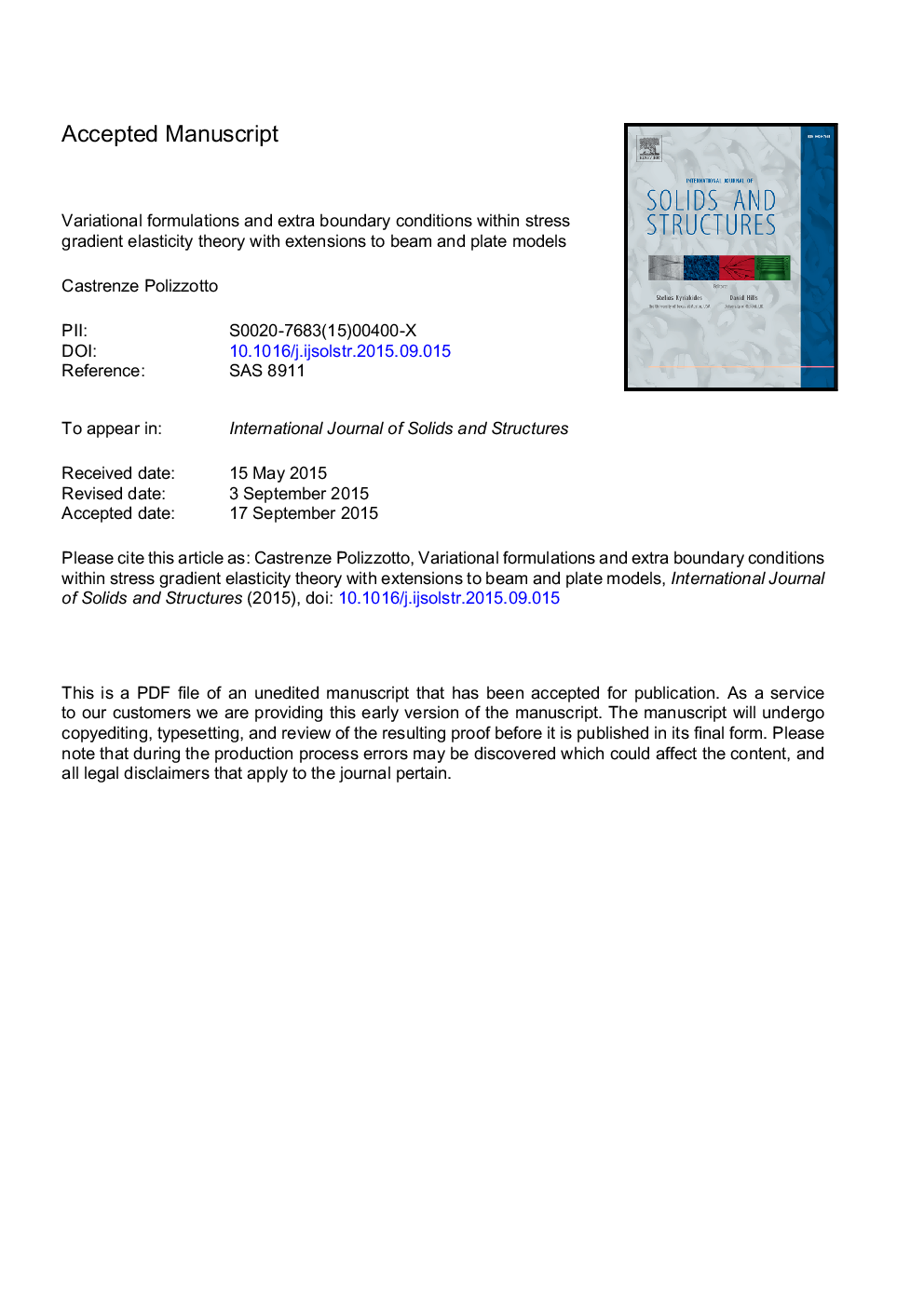| Article ID | Journal | Published Year | Pages | File Type |
|---|---|---|---|---|
| 6748634 | International Journal of Solids and Structures | 2016 | 49 Pages |
Abstract
The principle of minimum total potential energy and the primary principle of virtual power for stress gradient elasticity are presented as kinematic type constructs dual of analogous static type principles from the literature (Polizzotto, 2014; Polizzotto, 2015a). The extra gradient-induced boundary conditions are formulated as “boundary congruence conditions” on the microstructure's deformation relative to the continuum, which ultimately require that the normal derivative of the stresses must vanish at the boundary surface. Two forms of the governing PDEs for the relevant boundary-value problem are presented and their computational aspects are discussed. The Timoshenko beam and the Kirchhoff-Love plate theories are extended to stress gradient elasticity under the assumption that stress gradient effects do not propagate transversally. It is shown that for beam models no extra gradient-induced boundary conditions are required, whereas for plate models such conditions must be enforced at the contour surface of the plate, where the normal derivative of the stress resultants are required to vanish. Appendix A is devoted to some basic aspects of the mechanics of the microstructure; Appendix B to a comparison between the present theory and an analogous theory from the literature (Forest and Sab, 2012).
Related Topics
Physical Sciences and Engineering
Engineering
Civil and Structural Engineering
Authors
Castrenze Polizzotto,
